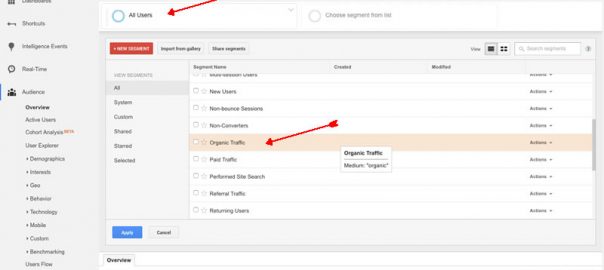It’s been 2 years since the last major update and Google has announced the release of the 4th major Penguin Update.
These update announcements can get pretty techie and filled with so much industry jargon that most people just quit trying to understand what the announcements are trying to say.
We’re going to try really hard to not do that. We want to give you the information on this latest release simply and in a context of what it will mean to your company.
Why Do We Have Penguins?
Before we dive right into this latest update, it’s important to understand how we got here and to remember what Penguin was designed to do.
Penguin rolled out in April of 2012. The focus of Penguin was and still is, to reduce the search engine spamming that some webmasters and SEO’s do by, predominantly, developing “unnatural” backlinks.
And, though unnatural backlinks were and are the primary focus of Penguin, it also is on the look-out for other quality scores like:
- Too many links on a page
- Keyword stuffing
- Any tricks that are developed to improve search rankings
Essentially, if you’re doing anything to game Google’s algorithm, Penguin was built to find you and decrease your site’s rankings. Pure and simple.
Have You Been Hit?
Less than 1% of indexed sites were negatively affected by the Penguin 3.0 update, in the US and the UK. Seems like a pretty insignificant impact. That is until you realize that this 1% impacts over 12 billion search queries! Yup, that’s Billion with a B!
Are you wondering if your site has fallen into this 1% of sites affected? There is only one way that you will know if your site has been affected by Penguin. You will see a dramatic decline in your site’s rankings. As an example, for search queries that you used to be on the first page of results, you may no longer show up in the top 50 or even the top 100 pages.
You won’t receive a notice telling you that your site has been hit by Penguin. You have to either be using a penalty checking tool like Fruition or Panguin Tool regularly, or you will have to be reviewing your analytics reports on a very regular basis.
There are pros and cons to each, but both will require you to be engaged with the reports of your site on a very regular basis. If you want to go with the penalty checking tools you will end up with a monthly subscription fee after their initial trial packages end.
 If you would rather go the analytics route, then the first step will be to set up a report that shows only traffic that is coming to your site from organic search.
If you would rather go the analytics route, then the first step will be to set up a report that shows only traffic that is coming to your site from organic search.
Then monitor that report every week. You will be looking for sharp declines in organic traffic during the same time periods as a Google update announcement.
What New In 4.0
There are 3 changes to Penguin with this latest release:
- It is now part of Google’s core algorithm
- It is now more granular
- It is now executed in real-time
Each of these updates will have an impact on recovery if you ever get hit by Penguin. Here’s what each of these changes means:
Google’s Core Algorithm: Google’s algorithm is made up of over 200 unique signals that help show a user the best source of information for their query. That’s a lot of moving parts and with this release Penguin has become another one of those parts.
To put it in the words of Google’s Andrey Lipattsev, search quality senior strategist, Google’s core and updates like Penguin could be thought of like the starter of a car engine. Years ago, the starter was outside of the motor. As the engineering improved the starter moved into the engine. It became integrated with the engine. Nothing essentially changes with the work result, but it became more convenient.
That’s how we need to thing about Penguin becoming part of Google’s core algorithm.
More Granular: In Google’s words “Penguin is now more granular. Penguin now devalues spam by adjusting ranking based on spam signals, rather than affecting the ranking of the whole site”. That seems pretty clear! Ok, maybe not!
Penguin has historically dropped the ranking for an entire site when potentially only one page would be found to have gotten on the wrong site of Penguin. Based on that, we are going to assume that what Google is trying to say is, that this update will drop the ranking only of the page or pages that have caused the problem.
Real-Time: To appreciate this change it’s important to understand what was happening before this update.
Penguin was being run on a very sporadic basis. Every time that Penguin ran it would add sites to its list that were found to have unnatural links, along with other quality issues. Because of the sporadic frequency that Penguin was running under, it may have taken a little longer for a website to get caught and included within this list.
However, again, because of the infrequency of Penguin, even if you fixed all of the problems on your site right away, you’d still have to wait for another Penguin run to begin to shed the negative results from being put on the list.
Now with Penguin having real-time processing and being part of Google’s core it is running continuously and it is assessing sites for inclusion and exclusion at the same time.
Now, if your site has been caught by Penguin, you’ll be able to be removed from the Penguin list much faster, after you make the fixed required.
Summary
Penguin update 4.0 now moves this into Google’s core algorithm so we probably won’t be hearing any more talk about Penguin. Websites that are spamming Google, especially with manipulative linking schemes, will fall out of ranking faster. But once repaired, the will be back in the game faster, too. And, if your site is penalized, chances are really good that your entire site won’t fall out of the results pages.
Digital & Social Articles on Business 2 Community(55)
Report Post






